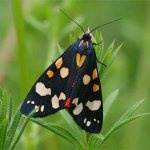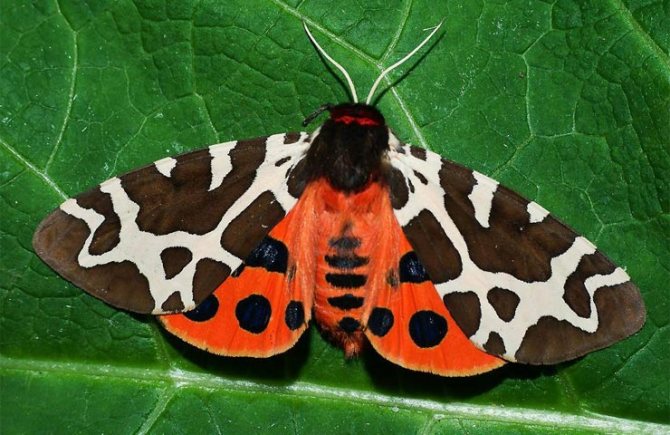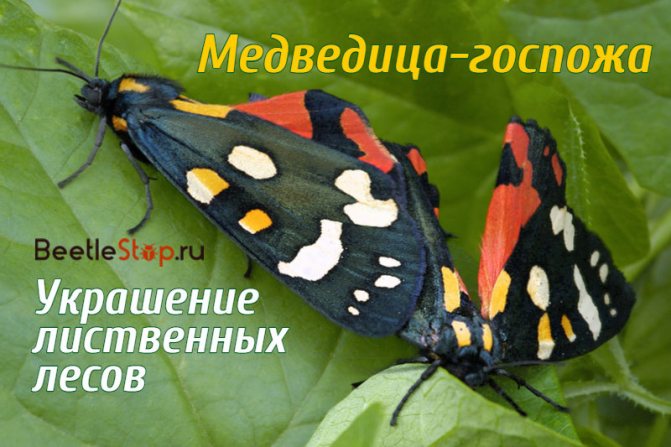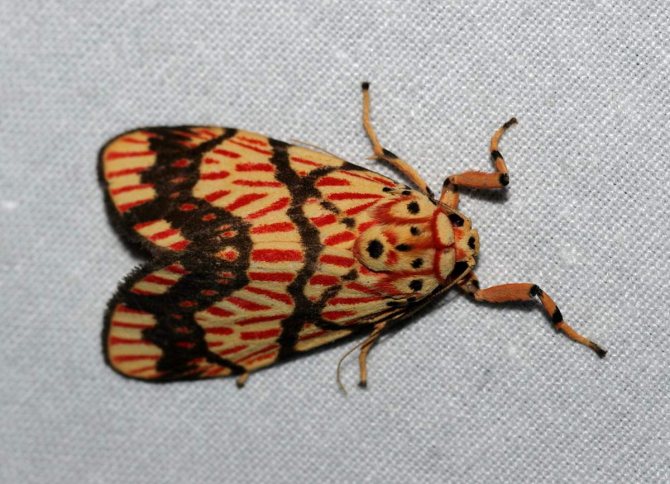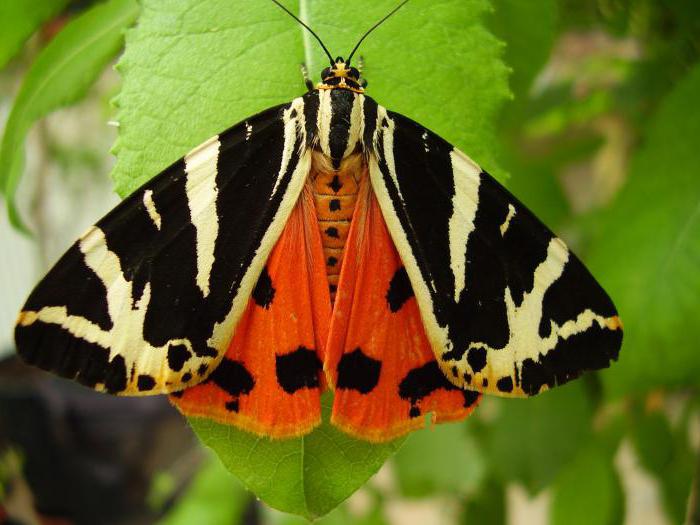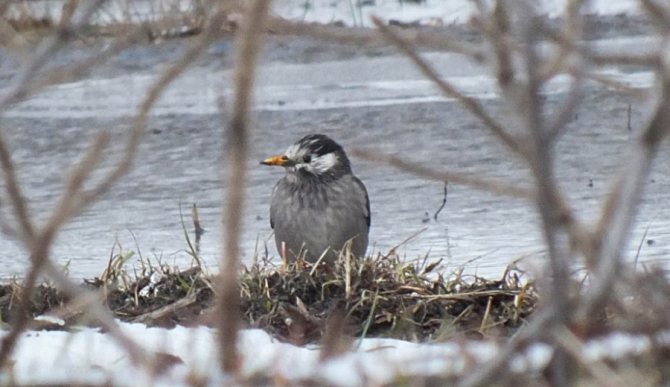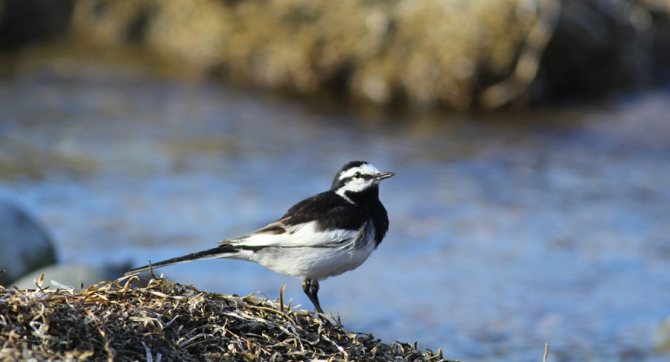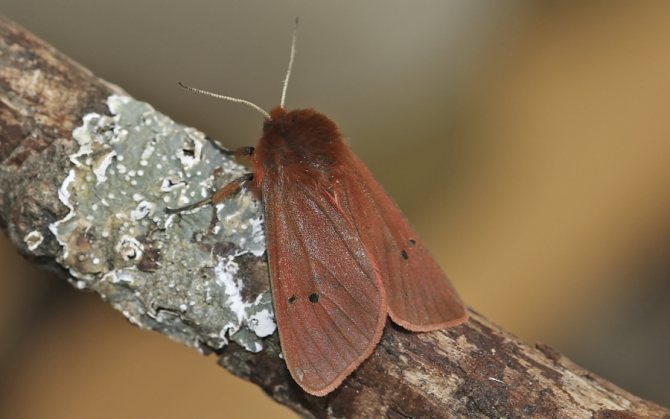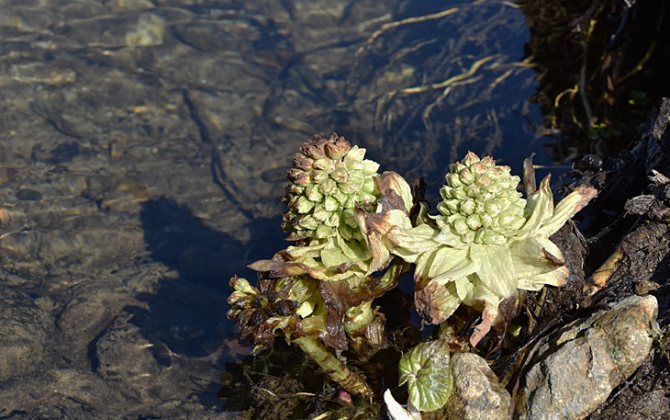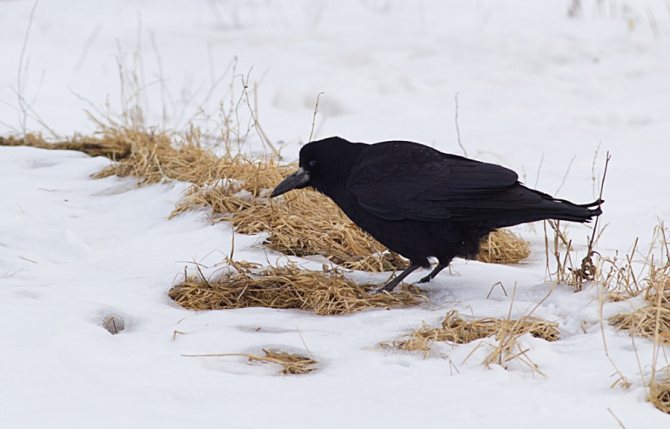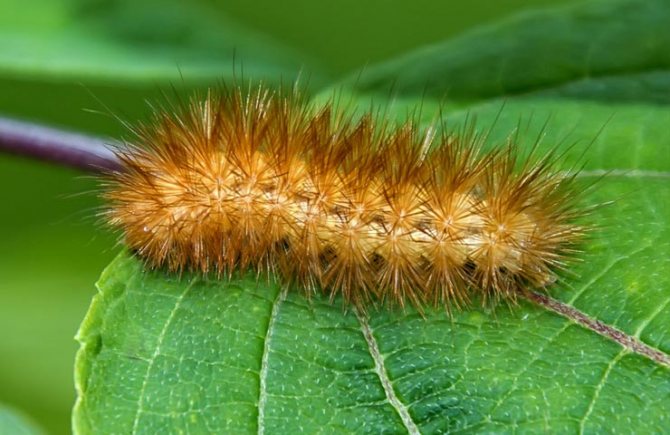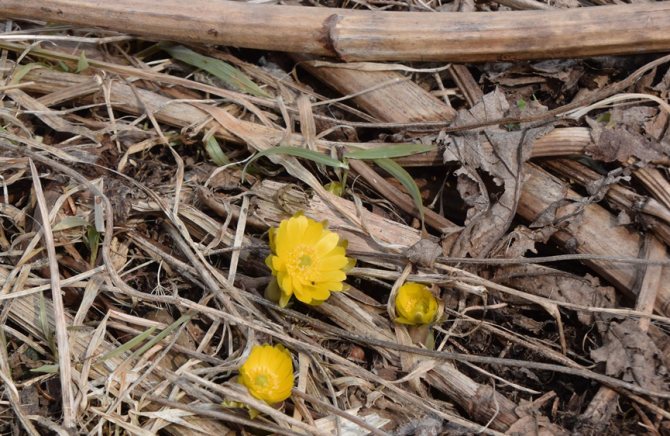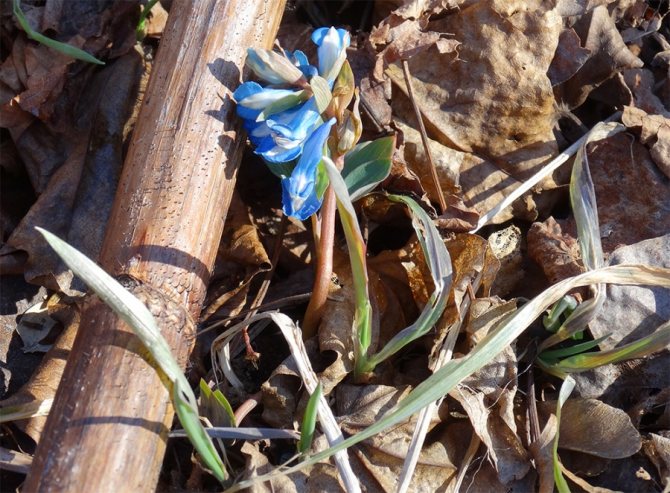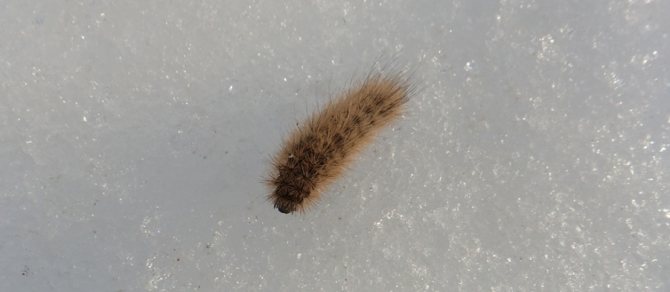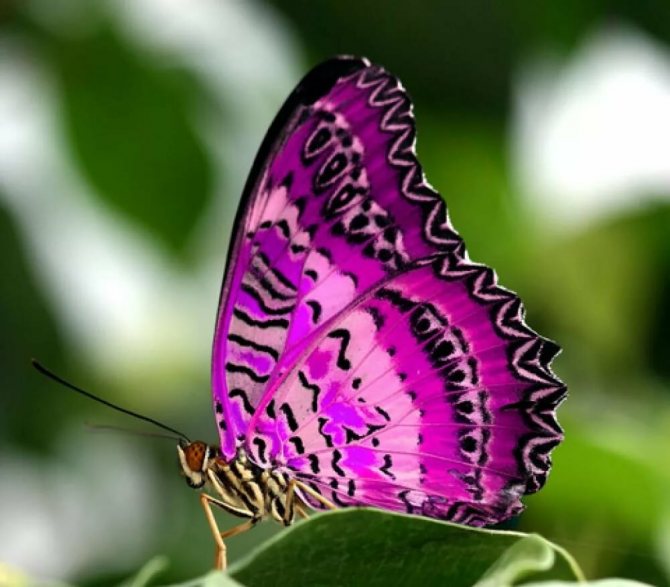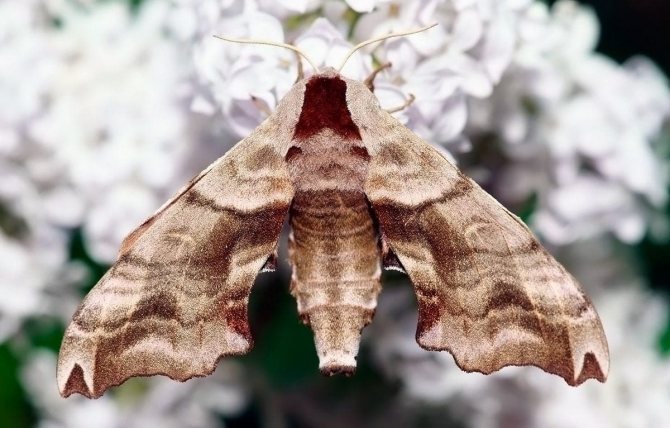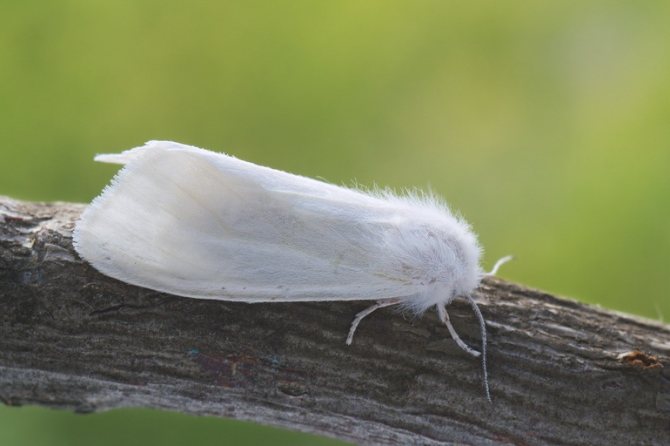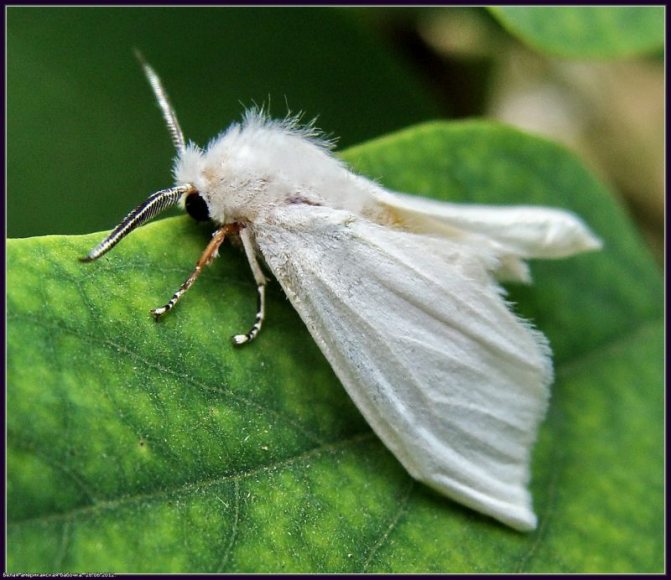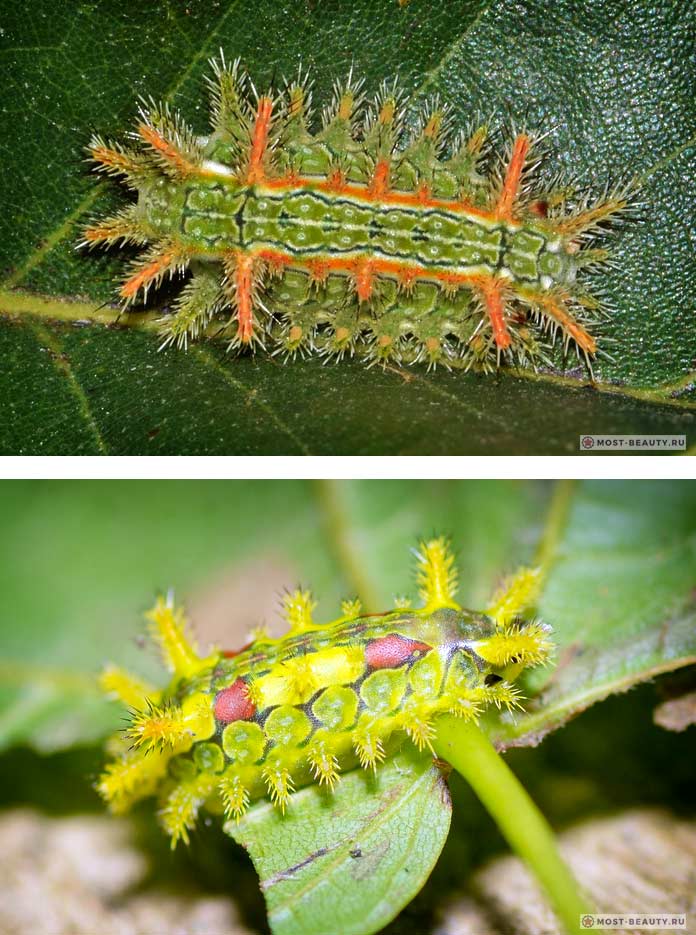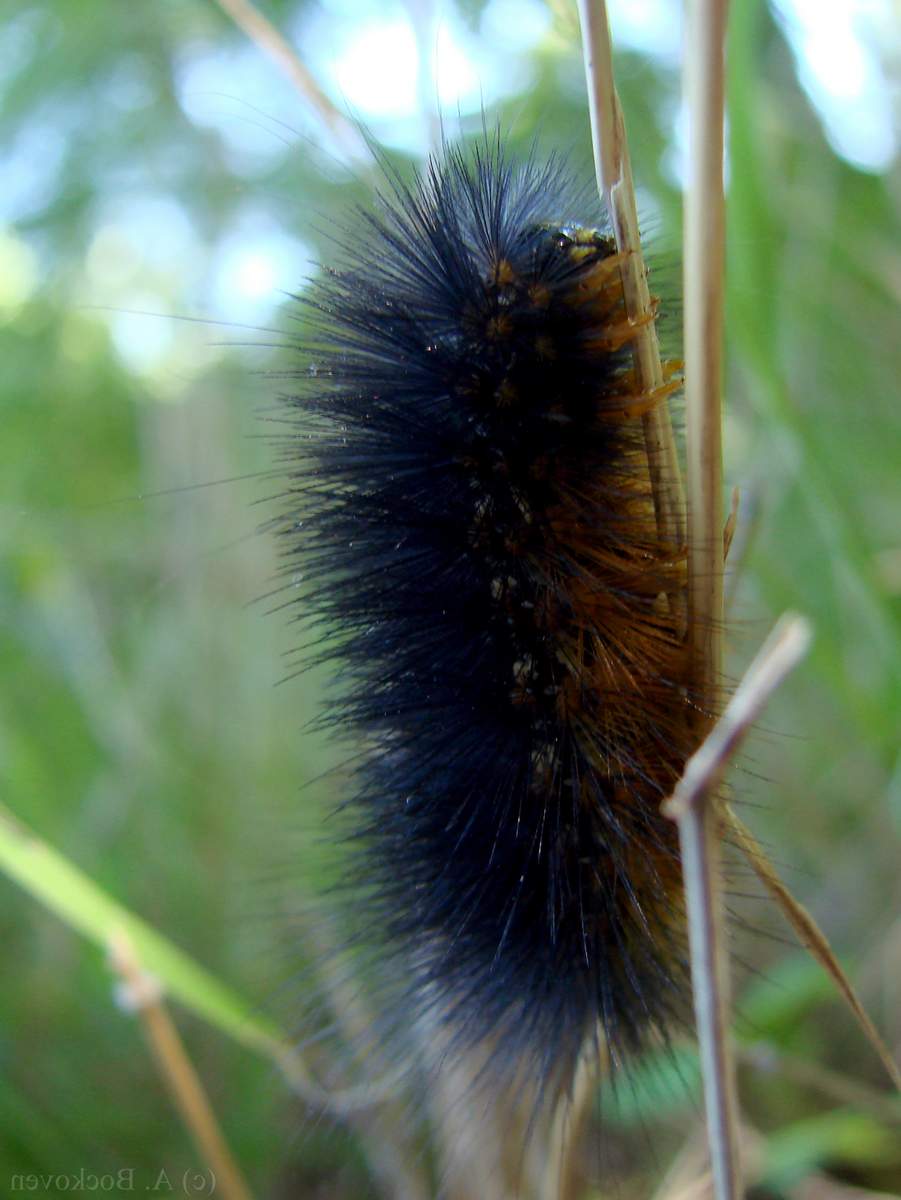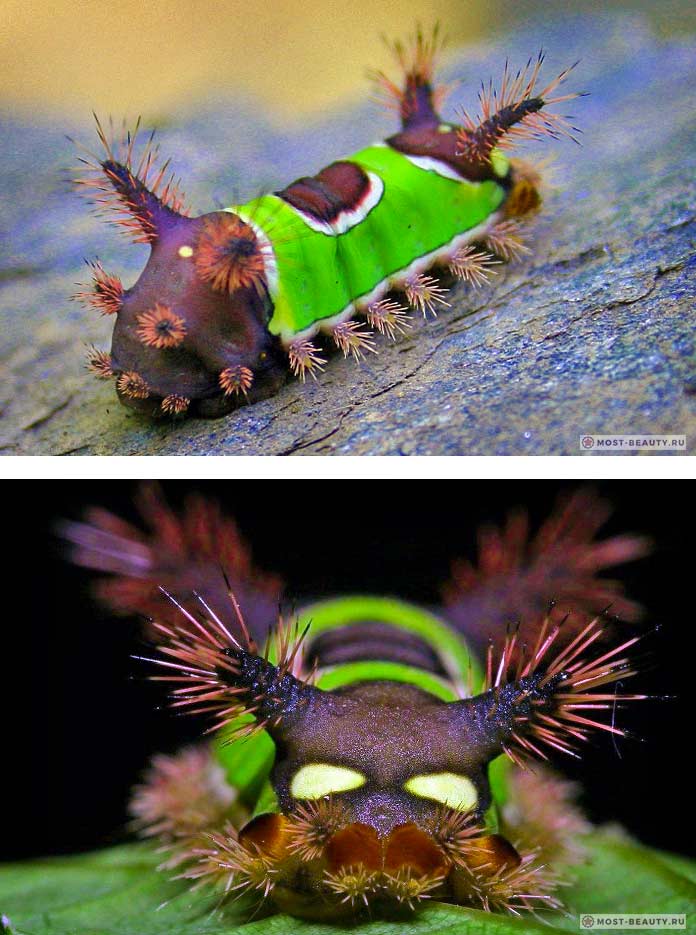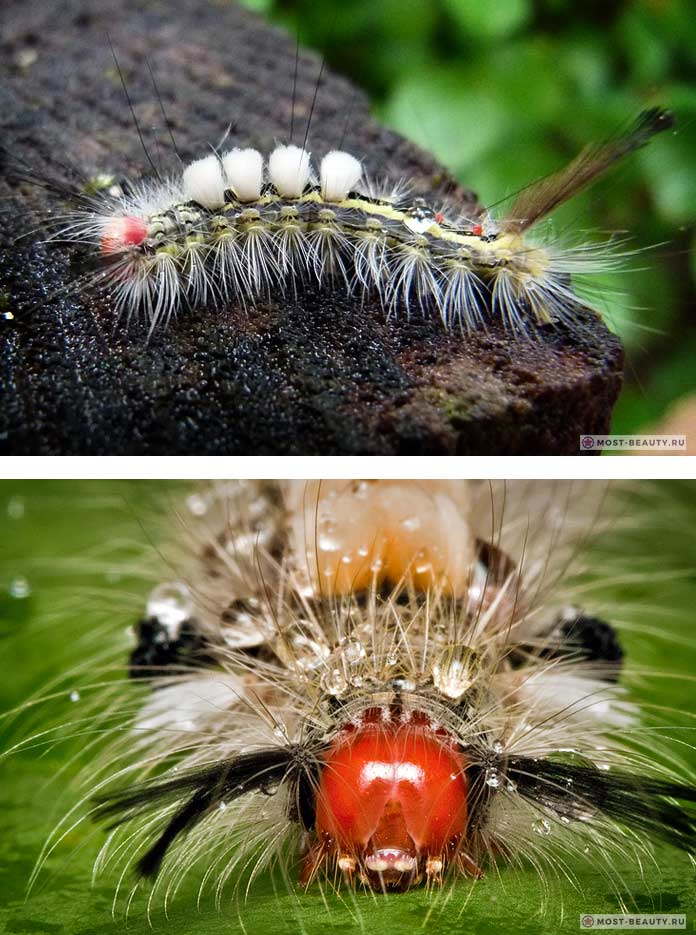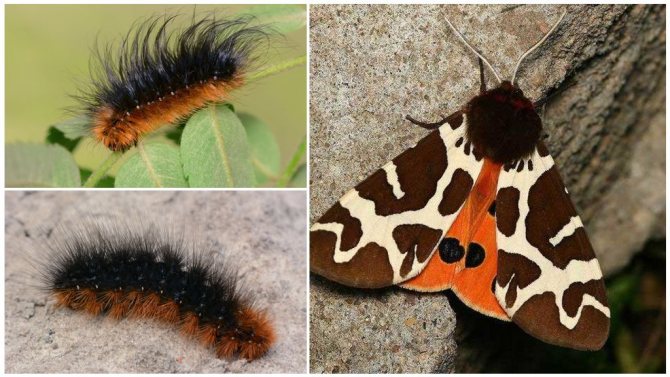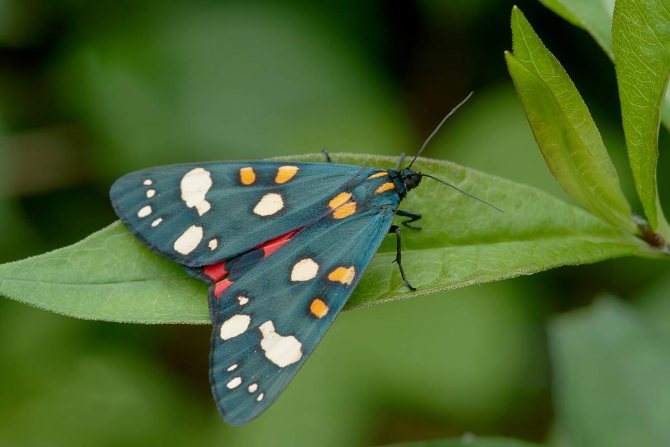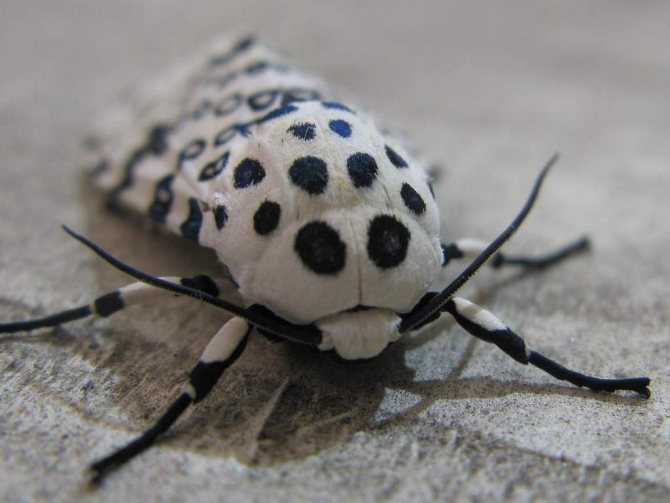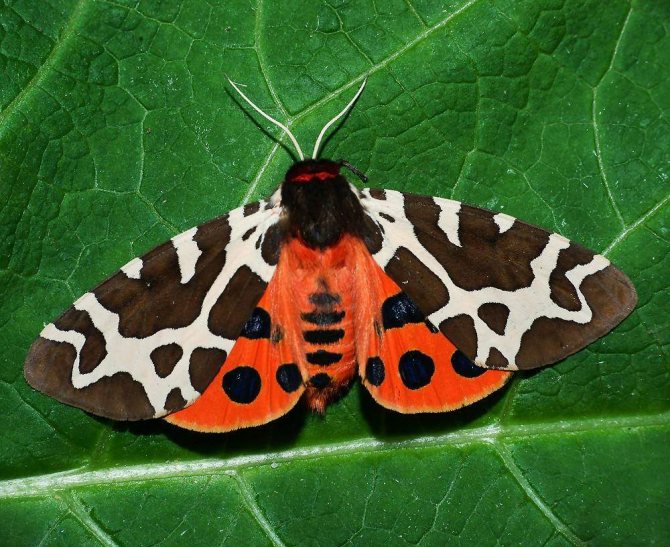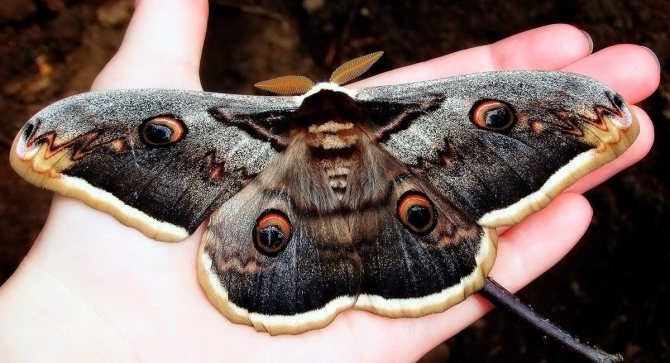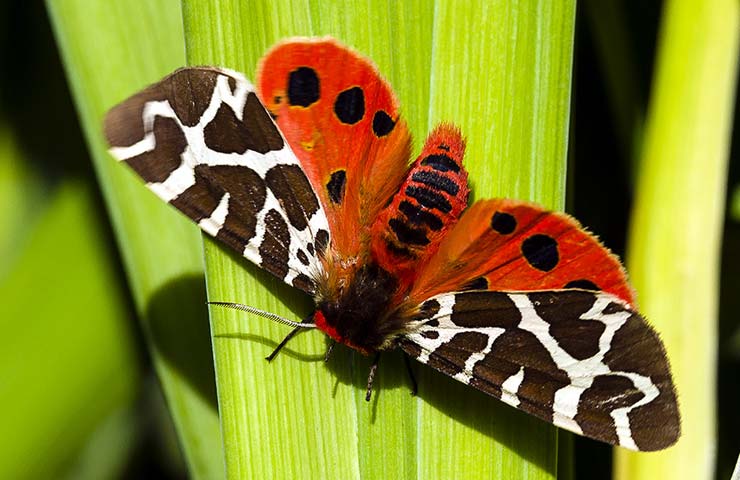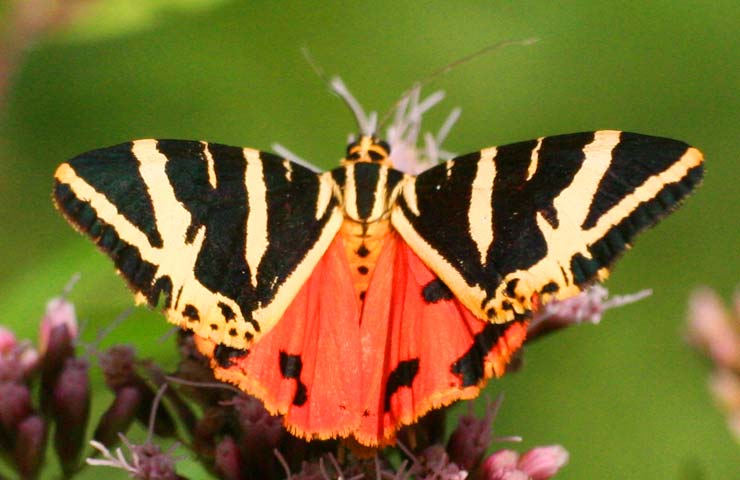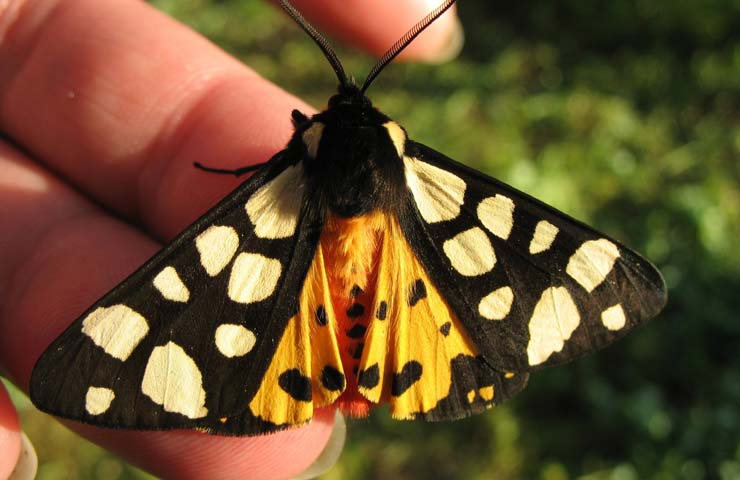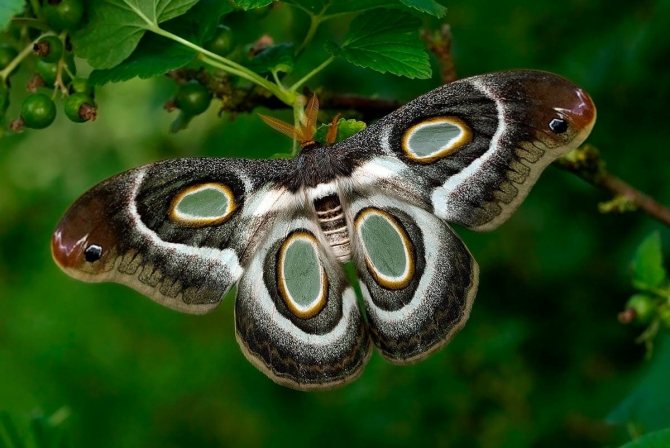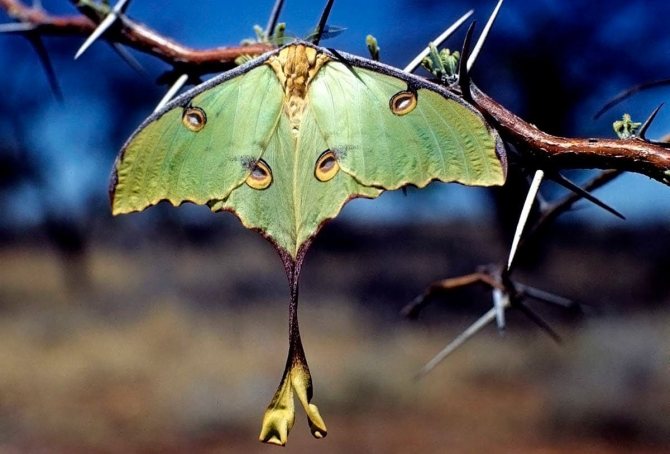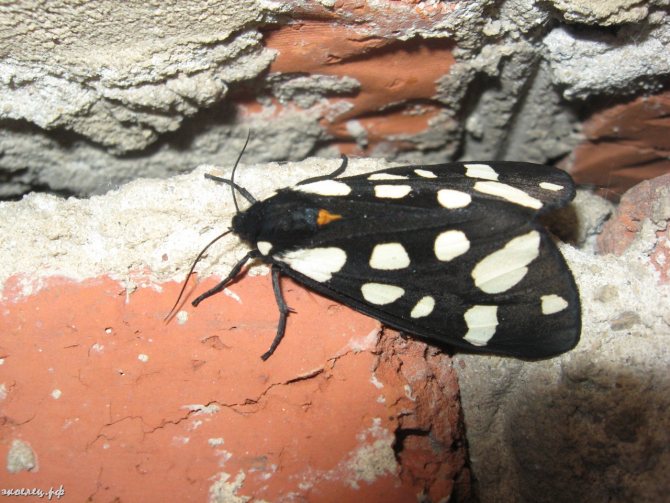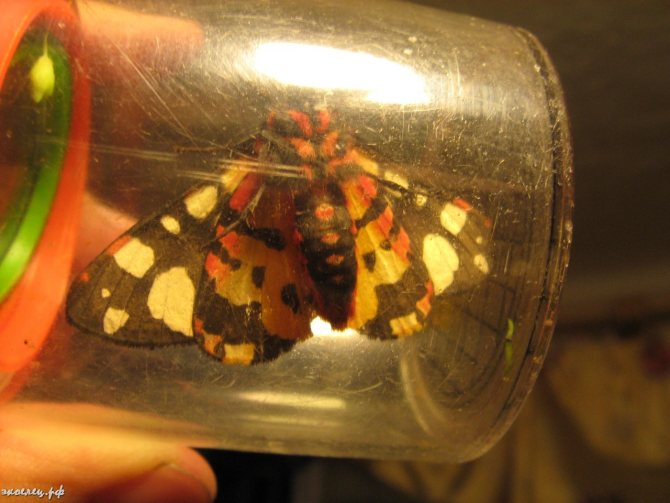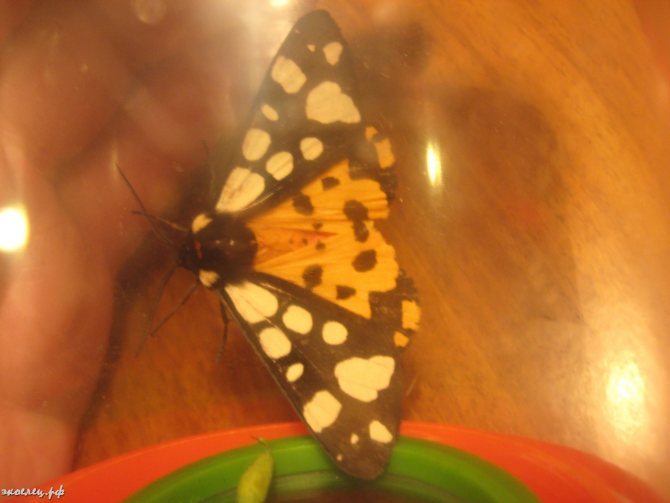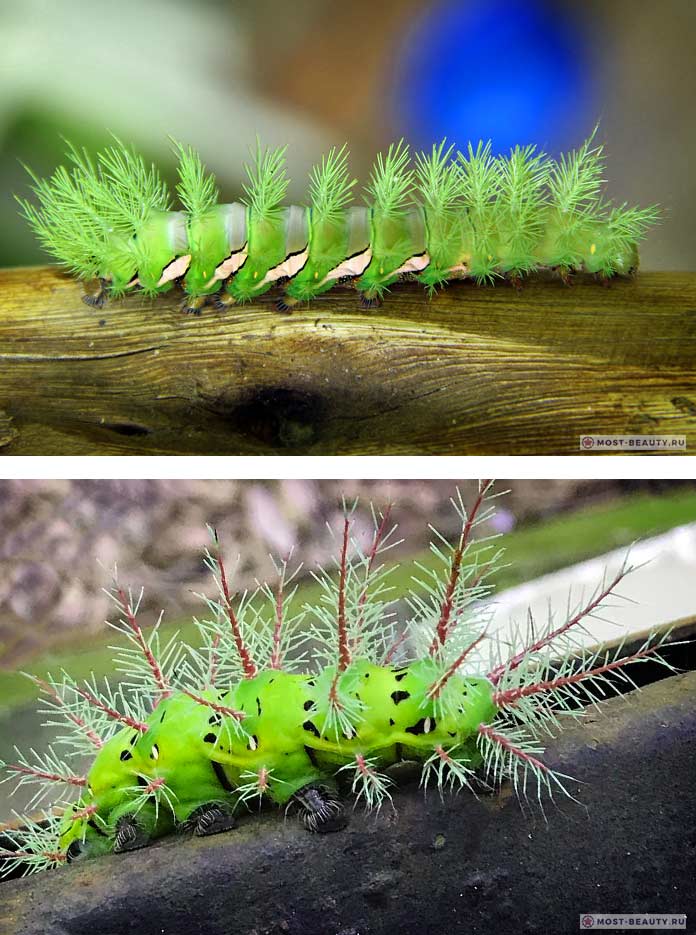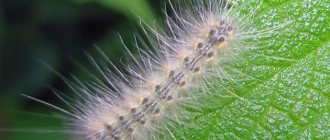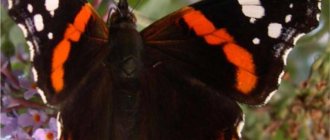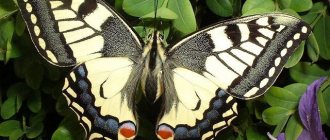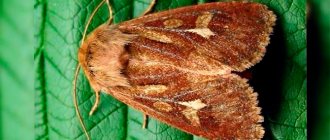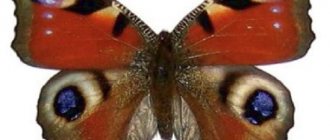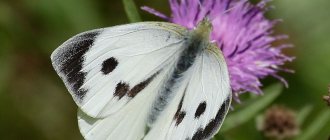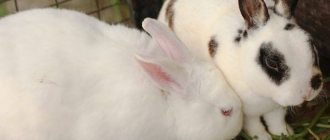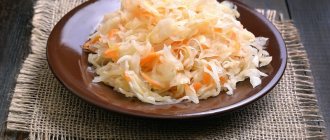The bear caterpillar is no less attractive than its butterfly. However, behind the external beauty lies the presence of a dangerous poison that can harm human health. These caterpillars harm the plant world a lot, so often the owners of gardens and vegetable gardens have to look for ways to deal with them. They are very voracious and feed on the leaves of most garden trees and crops.
Family features
All bears are relatively large in size. They have a plump body. The front wings are triangular in shape, in most species they are brightly colored. The hind wings are smaller and often have a modest coloration. A calm or resting bear butterfly folds its wings into a house, hiding their brightness.
An important feature inherent in the entire family is toxicity. The blood of these butterflies has a bitter taste - this is for those who did not understand the signal of the variegated wings and nevertheless decided to attack. Most venomous creatures look catchy, as if warning predators about their peculiarity. It is difficult to digest such prey, it can cause irritation in the digestive system or allergies.
Young people are no less protected. The caterpillar of a bear butterfly not only has bitter poisonous blood, but also its hairs emit a strong irritating substance. Not only should you not chew it, but even touch it. Thanks to this feature, both adult butterflies and caterpillars have practically no natural enemies.
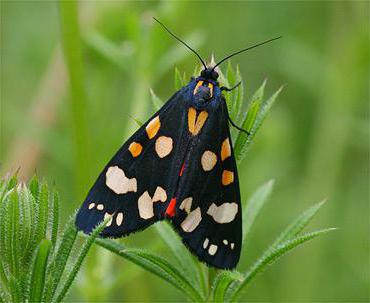
Lifestyle
The favorite habitats of Callimorphadominula are mixed or sparse deciduous forests. They often settle in bushes, along road ditches, on the banks of a stream. Butterflies are active at nightfall. During the day, they hide in humid, shady places. But there are exceptions to the rules, sometimes adults can be seen during the day, when moths fly over flowers, collecting the nectar of umbrella plants.
The moths fly in June-July. The species is sedentary, males and females do not spend much time in search of a partner.
After mating, eggs are laid on the main food plants of the caterpillars:
- stinging nettle;
- lucid;
- buttercup;
- geranium.
There are several subspecies of Callimorphadominula found in Europe and Asia:
- C. d. philippsi - Azerbaijan, north of Iran;
- C. d. rossica - Caucasus. Transcaucasia;
- C. D. persona - Italy.
These are just a few subspecies. Also interesting is the yellow form of the female bear f. flava.
Defense mechanism
The species is notable for its weak flight, so it is not difficult to catch a moth. At the same time, they do not have many natural enemies. This is due to the presence of poison in the body of insects. The hemolymph of the imago is bitter; not many birds and reptiles like it. The defense mechanism is present not only in the adult representatives of the species, but also in the larvae. Long and thick hairs are a decoration, and a kind of shield from predators. Even in humans, they can cause an allergic reaction if you scare a caterpillar by picking it up.
Information. Bright tones in the coloring of the wings warn animals about the danger of the lady bear to their health.
Caterpillar
Before turning into butterflies, the caterpillars have to do a lot of work and perform an important task - to gorge themselves for the future. Therefore, they are omnivorous and gluttonous. Caterpillars eat shrubs and herbaceous plants, tree foliage. This damages the plantings.
Before pupation, the caterpillar weaves a loose silky cocoon. She weaves her own fallen hairs into the walls. The pupa is motionless inside the cocoon.
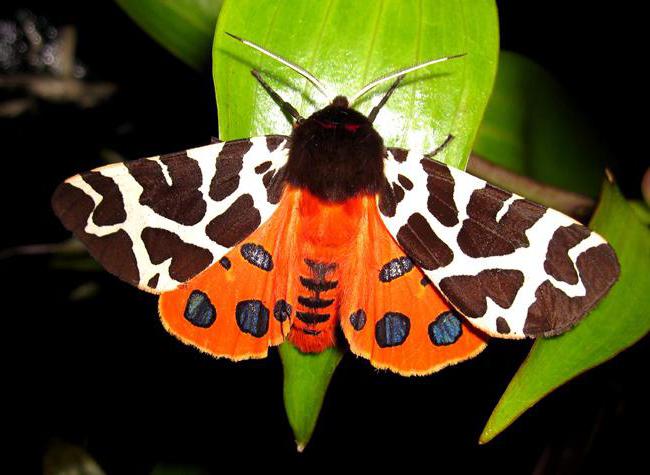

Life cycle
How long do moths live? The life cycle of these insects deserves close study, it can be divided into several successive stages:
- Eggs are laid by these moths either in heaps or in separate specimens. Moreover, females are able to lay them directly during the flight, place them on objects or in the tissues of vegetation.
- After the allotted time, caterpillars appear from the eggs, having a head, three pairs of legs with marigolds on the chest and five pairs of legs on the body. Having survived periods of molting, caterpillars are enclosed in a cocoon called a pupa. In it, the individual cannot move, the legs are tightly pressed to the body.
- After a while, an adult moth emerges from the pupa.
Bear Mistress
In the middle lane, the lady bear butterfly is very common. It is quite large, the wingspan reaches 5.5 cm.
These butterflies live in shady and humid places in June and July. They inhabit ravines, river banks, forest glades and clearings. Caterpillars eat the leaves of shrubs and herbaceous plants: willows, blackberries, strawberries. Pupation occurs in the spring.
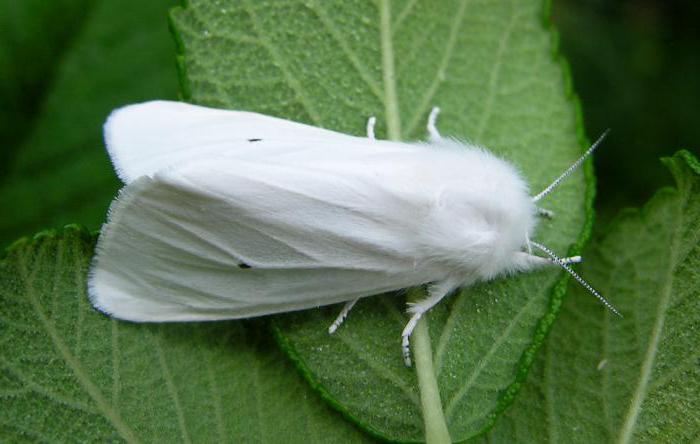

Reproduction
Lepidoptera are insects with complete transformation. The lady bear gives one generation per year. Caterpillars appear 6-8 days after laying. At the first age, they are light yellow, with a large round head and many hairs on the body. The offspring are polyphagous, except for the plants listed above, caterpillars prefer to feed on raspberries, blackberries, willows, nettles, honeysuckle, forget-me-nots.
The adult larva is black-blue with bright yellow longitudinal stripes on the back and sides. The stinging hairs on the caterpillar's body are collected in bunches. The yellow stripes are interrupted by black and white warts. Caterpillars plunge into winter diapause. They turn into a light, loose cocoon and hide among foliage and plant debris. Pupation occurs next May. Pupa is dark brown in color.
Kaya dipper
No less common is the Kaia bear moth. The representatives of the species are very beautiful. The wingspan of up to 8 cm makes them one of the largest in our country.
The front wings of the kaya bear are coffee-brown, with white constrictions. Large black and blue peas are located on the red hind wings.
Kayi bears live in late summer. Their black furry caterpillars appear in the fall, survive the winter, and turn into butterflies in the summer. At the moment of danger, caterpillars curl up into a ring, protecting all their important organs, exposing poisonous hairs outside. Caterpillars weave their cocoons under snags, knocked down tree trunks.
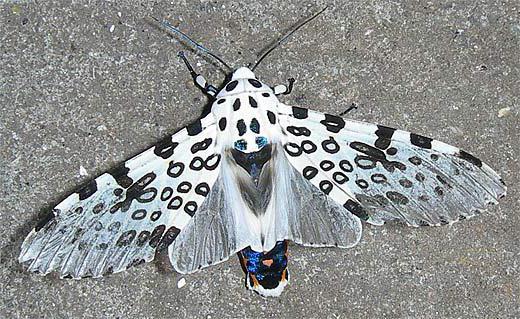

Hera and Hebe
There are few butterflies that are colored as brightly as bear butterflies. Not only do their front and hind wings almost never have the same color, but each wing also has its own completely peculiar pattern of multi-colored spots and stripes. White, black and yellow spots are fancifully scattered over the yellow, black, red or brown background of the bears' wings. No less bright, variegated and abdomen of these butterflies. It is clear that female bears are the favorites of collectors and will really decorate any collection of insects.
The coloring of bear butterflies is really designed to attract attention. Only not people and, moreover, not collectors, but enemies. Many insects are distinguished by a bright, striking color: remember ladybirds, wasps, soldier bugs ("firefighters"). As a rule, they all have poisonous glands or a disgusting taste, and therefore are completely inedible for birds. This color is called warning by biologists. Bear butterflies, very poisonous for birds and lizards, take full advantage of it.
However, among the bears there are also modestly colored species.For example, the mint bear and the beggar bear have almost completely white wings with black dots scattered over them. The American white butterfly, which has penetrated into Europe from the United States, is similar to them - the most harmful of the bears. And the lichen bears are not at all bright, their color is rather patronizing. Lichen caterpillars develop on lower plants - lichens and liverwort mosses.
But back to the real, luxuriously colored bears. Because of them, the English call the entire family of bears tiger butterflies. Do not think that this name is associated with a tiger! Simply the word "tigros" in translation from Latin means "striped". This word was given to the big wild cat. And then there are tiger fish, tiger lilies, tiger shells and other "tigers".
Now, perhaps, you have another question: “Why are such multi-colored butterflies named bears? »Indeed, what is common between night moths and the owner of the forest?
It turns out that the whole thing is in the caterpillars of the bears, more precisely, in their appearance. The body of the bears' caterpillars is covered with such long dark hairs that they seem simply shaggy. In most caterpillars, these hairs sit on special projections-warts and are grouped in tufts-tassels. It was as if the caterpillars had been given some extraordinary hairstyle. In fact, hairy warts are not uncommon for butterflies, but in female bears (and also in silkworms) they are the largest.
For this "wool" on the caterpillars of butterflies, they called them bears. In England, there are special names for the caterpillars of bears: caterpillars of "tiger butterflies" are called "woolly bears", and also - "hedgehog caterpillars". I like the last name more, besides, it contains much more information. After all, the bears' caterpillars are not only covered with “needles”. In case of danger, they, like real hedgehogs, curl up into a ball, hiding both the abdomen and the head under the thorns.
By the way, bear caterpillars are born completely naked. Hair bundles grow in them later, after the first molts. The older the caterpillar, the longer the hairs covering it. Poisonous glands appear at their base, which makes the larvae inedible. (Such glandular hairs are called toxophores.) To help birds remember them faster, bear caterpillars have warning colors - bright stripes on the body or bright tufts of hairs. Toxophores are also dangerous to humans. Plucking their tips into areas of delicate skin, such as between the fingers, can cause very unpleasant itching or even allergies. And it's really bad if such a hair accidentally falls from the finger into the eye.
Bears are a fairly large family of butterflies. More than fifty of their species live in our country. Most butterflies fly at night, and their caterpillars feed on the leaves of a wide variety of plants. They can be found on willows, oaks, mountain ash, raspberries, blackberries, and even more often on herbs - plantain, dandelion, yarrow, nettle. Except for the foreign American white butterfly, they practically do not cause significant damage anywhere.
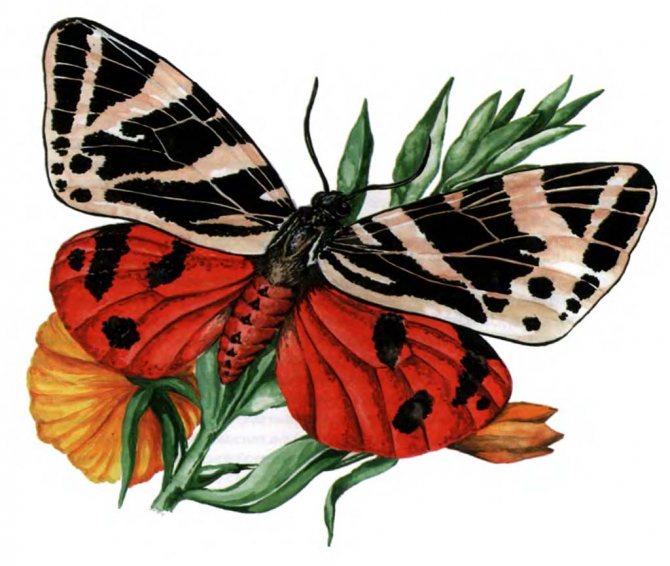

Hera bear
The two Linnaean bear butterfly species are named after Greek mythology. it hera bear (Panaxia hera) and bear-hebe (Arctia hebe). True, the first is now more often called the four-point bear, but these are zoological subtleties.
The hera bear is fairly common. In addition, it flies in the daytime. Gera is widespread in the European part of Russia (but not north of the middle zone), in the Crimea and the Caucasus, in the mountains of Central Asia. Its caterpillars are omnivorous and feed on beeches, oaks, willow-herb, plantain, clover, gorse, nettle, and lamb. They differ from caterpillars of other bears by a bright yellow or orange stripe along the back and numerous orange warts on the sides of the body. The butterfly itself has front wings with oblique white stripes against a dark background, and the hind wings and abdomen are red with black spots.
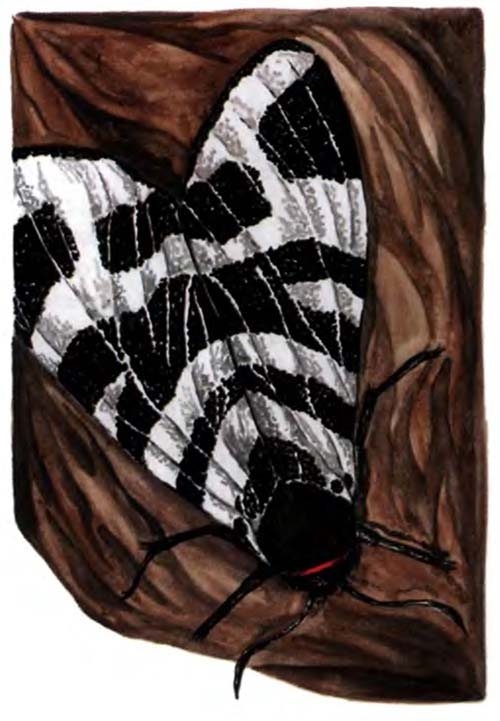

She-bear-hebe
There is also a very rare species of the hera bear, in which the hind wings and abdomen are not red, but yellow. All collectors dream of such a "yellow hero"! The habitat of the hebe bear resembles that of the previous species, but nevertheless hebe is not often found. Its caterpillars with black-gray hairs on the back and rusty-brown hairs on the sides live only on grasses: yarrow, milkweed, swan, dandelion. The flight of the hebe falls on May - July, which is one month ahead of the appearance of the hera butterflies.
The father of many gods living on Olympus was the fierce god Cronus, the son of Uranus and Gaia. Once, from his mother, Cronus learned that he would be defeated by one of his children. Since then, the bloodthirsty Cronus has swallowed all the children born to his wife Rhea. Demeter, Hestia, Hera, Hades, Poseidon - all were swallowed up by a cowardly father. And only Zeus managed to save Rhea. Time passed, Zeus grew up, rebelled against his father and forced him to return to the world his swallowed brothers and sisters. They appeared even more beautiful from the mouth of Cronus.
Mother took Little Hera to her brother - the gray-haired, secluded Ocean. Nereis Thetis raised Hera in peace and quiet. And soon Zeus saw the beautiful Hera. He kidnapped Hera and offered to become his wife. The marriage of Zeus and Hera was hiding for three hundred years. Finally the secret was revealed, and a wedding took place on the majestic summit of Olympus. Each of the gods wanted presented the best gift to the wife of the great Zeus the Thunderer. But everyone was surpassed by her grandmother - the goddess of the earth, Gaia. She collected all the best that was in her depths, and grew a wonderful apple tree with golden apples. Hera was never so happy as when she sat on a golden throne next to the great king of the gods, dressed in magnificent clothes and shining with youthful beauty.
Most of all, the ancient Greeks revered Hera as the goddess of marriage, guarding conjugal love, protecting its sanctity and inviolability. Hera was approached with requests for the birth of a child and for numerous offspring. And she herself gave birth to Zeus three children - Gebu, Eilithia, Ares.
Hera is strong and powerful. She can strike anyone with thunder and lightning, she can control all the forces of nature, as she wishes. And only Zeus is not subject to Hera. He is often carried away by beautiful goddesses and even mortal women. That's when Hera becomes angry and vindictive. In a frenzy, she pursues her rivals. It was through her fault that the nymph Callisto was turned into a bear, and the beautiful Io became a cow. It was Hera who swore to destroy Troy and all her people, because Paris gave the golden apple from the gardens of the Hesperides not to her, but to Aphrodite. What to do, and the goddesses want to be the most beautiful and the only ones for their spouses!
Sometimes Hera herself has a hard time. The stern spouse makes her feel the distance between them all the time. Once Hera tried to ask him about thoughts and thoughts, and in response she heard:
“Don't expect to ever know everything I think about. What you can know, you will know before other gods. But don't try to find out all my secrets and don't even ask about them!
When Hera dares to do something against the will of Zeus, he does threaten her with terrible punishment.
One of the days of the Trojan War, Hera decided to help the Greeks. She asked the god of sleep, Hypnos, to put Zeus to sleep, and then called the god Poseidon to help the Greeks. The Trojans were thrown back to the walls of their fortress city, but at that moment Zeus woke up. In anger, he threatened Hera that he would tie her with a golden chain and hang her between heaven and earth, if she would continue to help the Greeks hated by him.
And even earlier, Hera was punished by her son Hephaestus. He was born ugly and with an inverted leg. The cruel mother threw Hephaestus from Olympus to the ground. When he grew up and became the god of fire, he sent his mother a golden chair forged by him in revenge. But no sooner had the flattered Hera sit down in the chair, as her indestructible chains-fetters were entangled from all sides and she was chained to the chair.Only the return of Hephaestus to Olympus freed Hera from punishment for a long-standing offense.
And yet, whatever you say, Hera is majestic. Tall and slender, with a proud bearing, she appears at the feasts of the gods. In a magnificent outfit, she slowly walks to the golden royal throne, and all the gods rise from their seats and bow in obeisance to the wife of Zeus. If Hera happens to hit the road, then she leaves Olympus in a chariot with two immortal horses. Golden chariot wheels roll across the sky, it is impossible to look at the silver shine of the carriage. And where Hera drove, a fragrant trail remains for a long time.
Well, Geba is always young, frivolous and charming. The daughter of Hera and Zeus, Hebe is always present at the feasts of the gods and brings them ambrosia - food that supports immortality and eternal youth. She immediately fills the cups with the divine drink-nectar, the sweetness and fragrance of which makes her head spin. This is how the ancient sculptors portrayed her - with a bowl in one hand and an amphora in the other.
When, for all the merits of Hercules, Zeus took him to Olympus and bestowed immortality, Hebu was given to wife Hercules. Even Hera, who did not love Hercules before, blessed this marriage. And Hebe gave birth to two children to Hercules.
By the way, many of us first heard the name of Hebe when we were children. Remember the magnificent poem by Fyodor Ivanovich Tyutchev "I love a thunderstorm in early May ..."? Describing the peals of thunder spreading from edge to edge of the sky, the poet notes:
You say, windy Hebe, Feeding Zeus' eagle, Laughing, spilled a boiling cup from the sky on the ground.
The fact is that Hebe's duties included looking after the sacred animals of his father. Among them was the famous eagle of Zeus, the same one that once daily appeared to the chained Prometheus and tormented his unhealed wound.
American polar bear
The beautiful snow-white bear butterfly with a shaggy head is actually a formidable pest for agriculture and forestry. This species, originally from North America, came to Europe in the middle of the last century, from where it spread across the territory of Ukraine, the south and west of Russia, and penetrated into Turkmenistan and other countries of the Middle East. Experts believe that this could not have happened due to natural reasons and the butterflies got to the mainland with cargo transported across the Atlantic.
The white moth, as this butterfly is sometimes called, is of medium size, its wingspan does not exceed 3.6 cm. Ecologists and the quarantine service are taking measures to prevent the further spread of this pest.
Subspecies
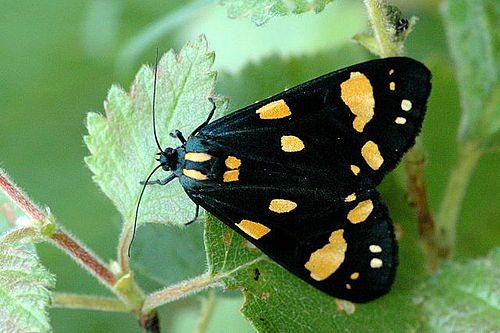

Yellow form f. flava
- Callimorpha dominula dominula
(Baltic States, Ukraine, Moldova, Western Russia, Europe except the South and North) - Callimorpha dominula lusitanica
(Portugal) - Callimorpha dominula pompalis
(Southern Alpine Valleys) - Callimorpha dominula persona
(Italy, areas south of the Alps) - Callimorpha dominula trinacriae
(Sicily) - Callimorpha dominula profuga
(Balkans, Western Turkey) - Callimorpha dominula rossica
(Caucasus, Transcaucasia, Northwest Iran) - Callimorpha dominula philippsi
(Azerbaijan (Talysh), Northern Iran, Southern Turkmenistan) - Callimorpha dominula kurdistanica
(Southeast Turkey, presumably Northern Iraq)
Gloomy Cave Butterfly
The Transcaspian grim bear is a very unusual butterfly. It owes its name to both the nondescript appearance and the way of life. This insect spends most of its life on the walls of caves and stalactites growing on them. At night, this butterfly gets out of the shelter and often flies up to tourist camps, attracted by the light of bonfires. It is noteworthy that caterpillars and pupae live far from caves, preferring steppe overgrown with wormwood and forbs.
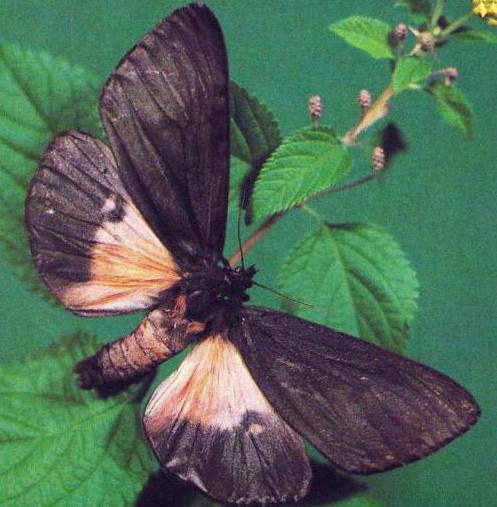

This species is still poorly understood. And other representatives of the bear family of butterflies keep many secrets.
The appearance and structure of butterflies
Moths are called moths, which is associated with the anatomical structure of the antennae, which look like feathers or threads.
What does a moth look like? Her body, like other species of this order of insects, has three sections, abdomen, sternum and head.... The latter in butterflies does not differ in size; it is decorated with eyes and large antennae. There are 2 pairs of wings on the insect's chest, and its body is covered with the smallest scales and hairs.
The oral apparatus has some features:
- the proboscis, with the help of which the insect takes food, is presented in the form of a flat spiral, which folds and unfolds and opens directly into the larynx;
- when the proboscis is not required, it is twisted and hidden under the scales that cover the butterfly's head;
- when unfolded, the proboscis is ideally suited to absorb liquids;
- adults have jaws (similar to those seen in caterpillars and other insect species) that allow them to gnaw at objects.
As for the wings, they practically do not differ from those of daytime individuals. Night beauties have 2 pairs of wings, which are quite densely covered with the smallest hairs, as well as scales that form clusters of hairs.
The structure of the wings may differ in different subspecies:
- a butterfly may not have wings at all (such a structure is transmitted by insects from generation to generation and is an evolutionary manifestation);
- have a wide wing surface;
- have very narrow wings, almost linear.
The flight that a butterfly can demonstrate also depends on the structure of the wings. For example, male Volpianids are excellent flyers that dive beautifully in the night sky. And their females can be either with wings or without them.
On the other hand, species of moths are known that have wings of a standard size and shape, which do not allow the insect to fly (for example, in the silkworm). Best of all, the aircraft is developed in the moth, a subspecies of hawk moth, whose narrow wings have a high flapping frequency, allowing them to fly quickly and hover in the air for a while, as do hummingbirds.
In some subspecies of moths (the same hawk moth, glass moth), there are no scales and hairs at all on the surface of the wings. However, this fact does not in any way affect their ability to fly, the narrowness of the wings allows them to stably stay in the air.
Small individuals have rather narrow wings, which keep them in the air only due to dense scales located on the sides.
The main difference between daytime and nighttime species of butterflies is the attachment mechanism for the rear and front pairs of wings:
- Frenulum: in this case, a small process extends from the hind wings, which is inserted into the segment of the fore wing. In males, it is located on the lower part of the front wing, in females, on the base of the medial vein, it is an accumulation of villi.
- Yugum: There is a small blade on the front wing, which is fixed at its base. It is she who holds both wings together.
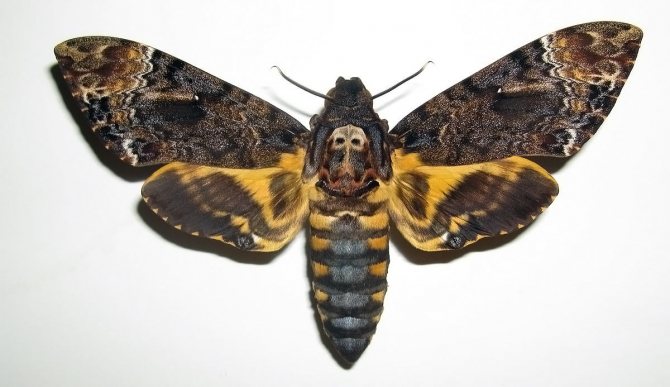

The hawk moth is also active at night
Types of moths
Moths are traditionally subdivided into 2 subspecies:
- Palaeolepidoptera are represented by caterpillars miners and small forms.
- Neolepidoptera this includes most butterflies.
Representatives of these subspecies differ from each other in different features concerning the structure of the larvae, mouth apparatus, wings and genitals.
Night butterflies include:
- glass cases, slender, similar to bees with the finest scaleless wings;
- moth, small individuals with triangular wings, most often pests;
- finger-wings, characterized by dissected wings with a scaly fringe;
- a real moth, the smallest individuals with scales along the edges of the wings;
- the notched wing moth, which has a bright color and is a dangerous pest;
- hawk moths, a large species of butterflies similar to hummingbirds;
- bagworms, in the form of round dark females and males without wings;
- peacock eyes, with wide wings with a pattern in the form of eyes and a dense body;
- moths, very slender butterflies, whose caterpillars crawl, bending in the form of a loop;
- leaf rollers, whose folded wings are in the shape of a bell, and the individuals themselves are pests that eat buds and apples;
- cocoons, hairy beauties, whose caterpillars do a lot of harm to foliage;
- bears with brightly colored wings;
- scoop, nondescript butterflies, whose wings are brown and antennae in the form of filaments;
- wave flies, females of which do not have wings, and males flaunt gray wings with antennae.
Benefit and harm
One interesting sign is associated with night butterflies: if a representative of this species of insects flies into the house, this promises its owners a lot of pleasant things, in the form of luck and prosperity.
Moths, which have a mouth apparatus with a soft proboscis, which cannot be pierced by tissues of plant and animal origin, do not cause any harm to humans. They also provide a lot of benefits. They pollinate many crops by feeding on pollen.... For example, yucca can only be pollinated by yucca butterflies, the fertilization of ovules of which is impossible without an external pollinator. These butterflies sculpt a ball of pollen, which is placed on the pistil of the plant.
The behavior of moths is quite complex, but it is this that ensures the reproduction of certain types of crops.
However, these beautiful moths are capable not only of being beneficial, but also of some harm. The caterpillars of these individuals are quite voracious, due to which such harm is done:
- damage to foliage, roots and stems;
- eating food;
- damage to fibers and materials.
The larvae of night moths can greatly harm agriculture. For example, the keratophagous moth lays its eggs on the fur and hair of domestic animals. Occasionally they use this raw material to build their own cocoons.
Known harm is caused by:
- grain moth;
- Indian flour moth;
- barley moth;
- mill fire.
These insects are capable of destroying grain stored in warehouses. These types of butterflies are widespread throughout the world, which forces farmers to constantly use insecticides to protect their own farms from extermination.
Caterpillars, belonging to the variety of leaf miners or miners, feed on plant elements that are located in the central part of the foliage. In order to reach them, the caterpillars gnaw through long passages and cavities under the epidermis. Other larvae are capable of making true miniature tunnels inside the root system, branches and trunks of trees. In such a secluded place, they live long enough, reliably hiding, both from the predators who encroach on them, and from the person trying to exterminate them.
The most notable harm caused by moth caterpillars is the destruction of foliage. Hungry larvae sometimes become a real disaster, they are able to completely bare fields, remove foliage from plants in gardens and even completely change the appearance of green spaces.
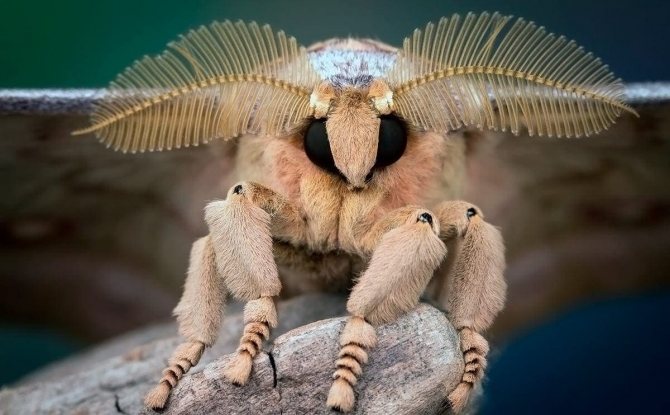

Saturnia io / Automeris io
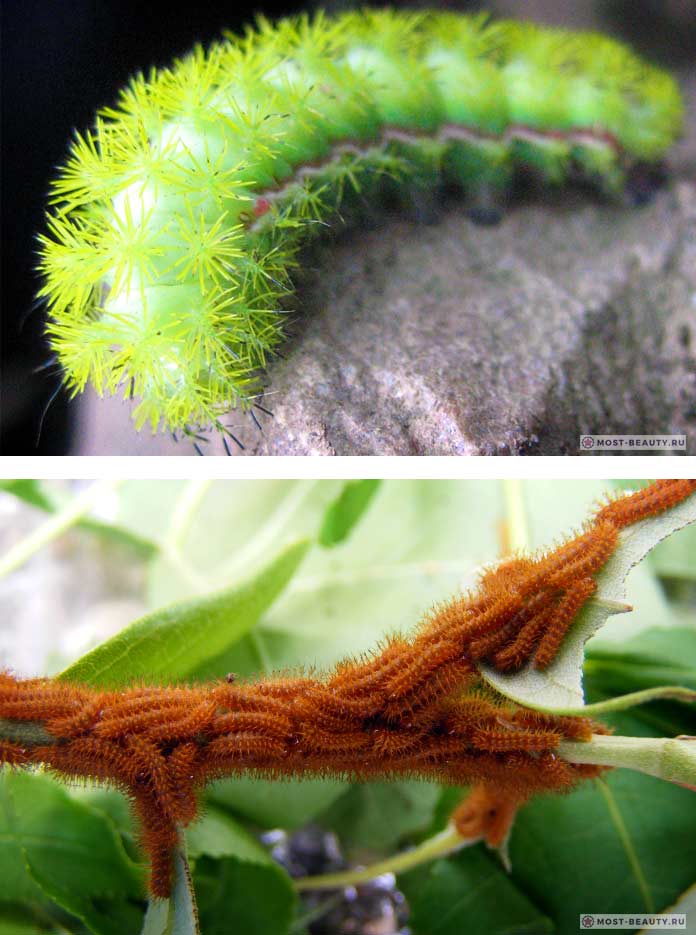

The beautiful peacock-eye butterfly is found in Canada and the United States. The entire body of the caterpillar of this butterfly is covered with peculiar greenish pom-poms-thorns.
She herself is light, and does not grow more than 4–5 cm. This view can only be admired from afar, but in no case should it be picked up or even touched. After contact with the thorns, poison enters the body. Poisonous substances cause redness, pain at the injection site and can even cause dermatitis.
A very cute and safe looking creature. But this is further proof that beauty is deceiving.
10
Lilac Hawk Moth / Mimas tiliae
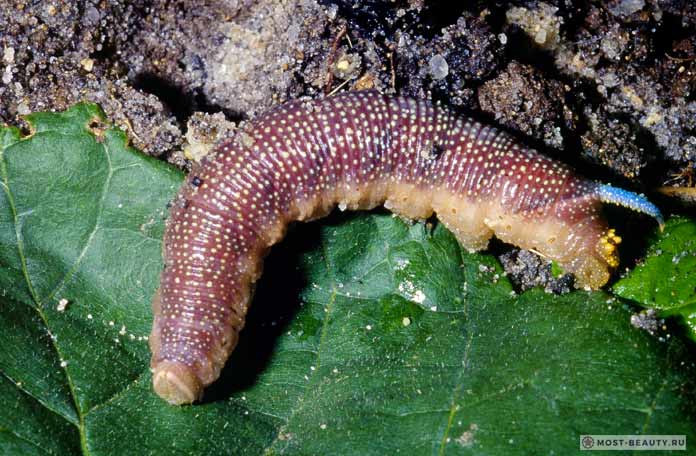

A small caterpillar reaches an average length of no more than 6 cm at its peak of development. Karl Linnaeus discovered the appearance of this discreet butterfly in 1758.
The body is rough, and there is a horn on the tail. This corneous process has a protective shield. Development begins in early summer. During this period, they can be found on the branches of wild and fruit trees. There are especially many of them on linden, birch, and various types of alder. By the time of pupation, it completely changes body color.
In itself, it is not dangerous, but if it crawls over the body, it will leave a bright mark. There are substances on her body that cause an allergic reaction.The most difficult thing is for allergy sufferers and people with weakened immunity.
9

